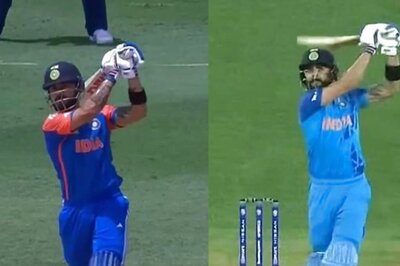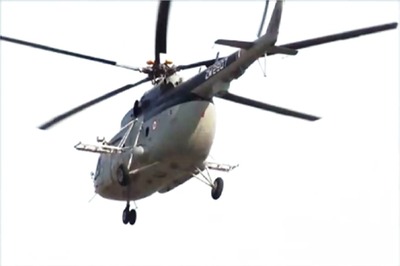
views
New Delhi: Prime Minister Narendra Modi on Wednesday announced that India had successfully demonstrated its anti-satellite missile capability by shooting down a low-orbit satellite, describing it as a rare achievement.
The missile test, called Mission Shakti, has undoubtedly pushed India into an exclusive club of space superpowers. But the test has also raised questions about falling space debris, an important point Modi did not mention in his address.
Where Exactly Was The Satellite?
In a statement, the Ministry of External Affairs said “the test was done in the lower atmosphere to ensure that there is no space debris. Whatever debris that is generated will decay and fall back on to the earth within weeks”.
It added that the satellite used in the mission was an existing craft operating in lower orbit. According to the National Aeronautics and Space Administration’s (NASA) Orbital Debris Program Office, India has 85 active and defunct payloads in space and 115 rocket bodies and debris, taking the total to 200. These figures are for the period till January 2018.
It is imperative to note that most telecom satellites are in the lower Earth orbit. The government is yet to make a clear statement on whether telecom giants were informed about the test. A telecom expert, on condition of anonymity, told News18 that space debris also poses a problem for India’s telecommunication satellites.
While the direct impact of shooting down such defunct satellites is minimised by the sheer distance, experts argue that debris can very well hinder communication satellites.
Indian telecom satellites are stationed at an average height of 36,000 km into space. India’s entry into the club of countries with military strength in space was through shooting down a satellite in the lower Earth orbit, which ranges from 600 km to 22,000 km.
Interestingly, a Russian satellite was reportedly hit by Chinese space junk in 2013.
Analyst Bharat Karnad said the debris will fall down in a couple of weeks. “The debris will burn before it falls to the Earth. That’s not a danger,” he said. Karnad, however, was critical of India mentioning that it had not violated any space treaty.
Analyst Uday Bhaskar said the placement of the satellite will give a clearer picture about the question of debris. “The debris will stay in space for a certain amount of time. It will come back to Earth, depending on the size and weight of the debris and the height at which it is orbiting,” he said.
If the satellite was shot down at a higher altitude, it will stay in orbit for a very long time, said Bhaskar. “There is a lot of space debris that is dependent on the altitude where the object has been fragmented for whatever reasons. This height is not clear yet,” he said. The government is yet to state at what height the satellite was targeted.
The Question of Outer Space Treaties
While the ruling Bharatiya Janata Party has celebrated the successful test, it raises questions over India’s commitment as a member of the Inter-Agency Space Debris Committee. The IADC was founded in 1993 with an aim to harmonise efforts to deal with debris in the Earth’s orbit. India is one of the 13 members of the inter-governmental forum, which includes China, the United States, the United Kingdom, Russia and Germany.
“India is a party to all the major international treaties relating to outer space. India already implements a number of transparency and confidence-building measures(TCBMs) – including registering space objects with the UN register, pre-launch notifications, measures in harmony with the UN Space Mitigation Guidelines, participation in Inter-Agency Space Debris Coordination (IADC) activities with regard to space debris management, undertaking SOPA (Space Object Proximity Awareness) and COLA (Collision Avoidance) Analysis and numerous international cooperation activities, including hosting the UN affiliated Centre for Space and Science Technology Education in Asia and Pacific. India has been participating in all sessions of the UN Committee on the Peaceful Uses of Outer Space,” the MEA said in a statement.
Karnad said the statement by the government on India not having violated any agreement or rules of any forum projects a defensive and diffident nation, too inhibited by international norms and rules to advance the national interest. He said it is precisely the opposite of what the Prime Minister intended when he announced the success of the ASAT test.
"He, perhaps, wanted to trumpet the country's acquisition of a capability to target low earth orbit satellites able to transmit tactical information and imagery, and signal China not to risk a border affray in the future. But MEA, as usual, has diplomatically put India on a back foot when, in reality, there are is no space-based weapons treaty and no international regimes or forums that India subscribes to. Why worry about riling anybody when the ASAT system principally serves to firm up India's security. What's the point of that? How are other nations to notice your capability?” he asked.
The question of treaties and how they are binding (or not) has been a topic of debate for long. The 1967 Outer Space Treaty prohibits weapons of mass destruction in outer space, not ordinary weapons. When China conducted its A-SAT test in 2007, it was criticised by several countries for having violated the “spirit of space cooperation” considering the mission left about 2,500 to 3,000 pieces of debris in space. Countries reacted negatively to the development even as China maintained that it was not entering into an arms race.
A year later, the US also launched its own strike but at a much lower altitude than the Chinese one. That operation was criticised as well.




















Comments
0 comment